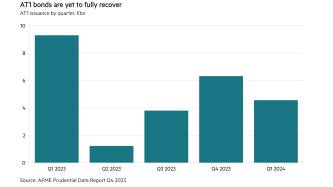Savings banks (cajas) play a unique and sometimes controversial role in the Spanish economy. The 46 regionally based institutions account for about 50% of the financial services market, meaning that half of Spain’s banking sector is set to remain indefinitely outside the reach of shareholder control.
For non-profit making institutions, the cajas run themselves on aggressively commercial lines, exerting a competitive pressure on listed banks that is widely seen as positive.
Although they are allowed to buy commercial banks, the cajas’ special status as private foundations protects them from takeover. Akin to mutual societies, with boards made up from regional government, employee, customer and other local representatives, they are also free (at least in theory) to pursue costly growth strategies without the worry of shareholders to report to or remunerate.
Powerful influence
Barcelona-based La Caixa, the biggest savings bank, has become the largest institutional investor in Spain with industrial holdings valued at more than €16bn. The powerful influence that La Caixa is said to exert on several of the country’s biggest listed companies came controversially to the fore last November when the group was seen to have forced the resignation of Alfonso Cortina as chairman of the energy group Repsol.
Commercial bankers grumble about the lack of a level playing field but most seem inured to living with the system as it is. The centre-left Socialist government that came to office in April 2004 has made it clear that it is not contemplating any privatisation of the savings banks, which play an important role in financing cultural and social projects in Spain’s 17 regions. As long as the financial sector as a whole continues to thrive, little serious pressure for change is expected.
Sophisticated operations
As restrictions on where and how the cajas can operate have been progressively removed, they have steadily increased the scope and sophistication of their operations. In September 2004, they accounted for 46% of non-corporate lending in Spain, against 47% for commercial banks.
According to central bank statistics, the cajas owned 53% of the country’s 39,469 bank branches and accounted for 36% of the nation’s total banking income. The list of Spain’s top 10 banks includes five cajas, with La Caixa and Caja Madrid ranking as the country’s third and fourth largest banks respectively.
Savings banks have consolidated to a limited extent, but only within regions. “Because cajas are partly governed by regional governments, cross-regional mergers are difficult because they would mean one region losing control,” says Carlos Stilianopoulos, head of capital markets at Caja Madrid.
Strong local roots
The cajas have strong local roots that keep them close to their customers and aware of their changing needs. This is seen as a particularly important benefit as the big listed banks seek to tap into Spain’s huge market of micro companies, partly to offset a gradual slowdown in the growth of mortgage lending.
“The savings banks have a clear advantage in terms of market knowledge that means we also have to become more market-driven if we want to compete with them in this segment,” says Julio López, Banco Bilbao Vizcaya Argentaria’s head of retail banking for Spain and Portugal.
Alejandra Kindelán, chief economist at Banco Santander Central Hispano, says that the cajas have also been influential in the internationalisation of listed banks. “The tough competition in their domestic market led commercial banks to look abroad for less mature markets with good growth potential,” she says. “Spanish banks went to Latin America looking for easier competition than they faced at home.”
It is also argued that without the savings banks, the dominant listed groups would have extended their market shares further, restricting competition.











